I had the worst possible preparation.
The third polar vortex hit the Midwest at the end of March and the lakes were still frozen. Except for a few short weeks in California, I had been unable to get on the water. The days to the Molokai Challenge were ticking away as I pondered the Ohio winter landscape with its beautiful, frozen, but to me completely useless lakes and rivers. I had signed up for every single bootcamp style class at the local Y and followed a simple routine: I would complete each 45 minutes class at about twice the pace of the instructor, then do the same program again immediately after by myself. But we all know that out-of-boat training does not help a lot. I was painfully reminded of this when I participated in a 10 mile flat water race in California in February: The German Kayak team paid a surprise visit to the race and one of the German paddler beat me by 10 minutes on a 10 mile flat course. And the lack of on-water training would be even more problematic for long races on open and difficult water.
By the time my flight left for Oahu on May 8th, ten days before the date of the race, I had completed only a single 20 mile paddle, 13 miles less than the distance from Moloaki to Oahu. Due to lack of time, I had opted for shorter and more intense pieces, because it would take me too long to recover from 4 hour long sessions.
I had propped up the seat on my Nelo Vanquish with a 2 inch seat pad so I could sit in reasonable comfort for 2 hours, but mostly because I knew that the most challenging part of the Molokai Challenge would come in the last 8 miles, when we would approach the vertical walls of Koko Head with its complex reflected swells and core fatigue might be an issue. There is no good way to prepare for that on a lake, but a tippy K1 with a high seat would have to do while there was no ocean at hand. But this had its own problems: The previous year I head fallen off the K1 in February in a snow storm and 35 degree water. Even though I was barely 50 feet from shore, I almost did not make it out of the water, before my arms and legs became unusable for swimming. But this is only an issue for about two or three weeks after the lakes thaw, then the water temperature hits about 45 degrees, and a swim goes from dangerous to just potentially uncomfortable.
I arrived in Oahu with ten days to go before the race and was determined to use the time to learn as much as I could about paddling in the unique conditions around Oahu. It is a double edged sword: The more you paddle to get used to the conditions, the less energy you have for the race. I ended up paddling between 10 and 20 miles each day, except for the day before the race because my boat had been shipped ahead to Molokai already.
I went on two paddles with Greg and Oscar that were really invaluable: There were things that Oscar saw that would have taken me years to figure out. For example, I thought I had spent the last 10 years perfecting the position of my footrest, but Oscar told me to push it farther out to straighten my legs more. This would make my surfski more stable. It felt so weird for the first five minutes that I would never have considered doing this myself, but ten minutes later it started to feel more natural, and by the end of the trip I decided never to go back to the old position.
He also tried to teach me when to start paddling (much earlier) and stop paddling (much earlier) when catching waves, where to steer (diagonally to the wave after I caught it), what to do with the tip of my boat (keep it out of the water), when to drop down into a wave (pretty much never, unless I see a run in front of me that I can catch with the energy from dropping down). But the important general lesson that I took away from paddling downwind with Oscar was that I had to do things that were unintuitive for me and directly contradicted what felt right to me. That’s very hard to do unless someone with a lot of knowledge and experience tells me to do it.
The morning of the race, on the flight out from Oahu to Molokai, I got to check the conditions of the final 2 miles into the finish at Hawaii Kai. There was a big swell from the south, similar and only slightly smaller than the one in which Pat Dolan lost and destroyed his ski in last year’s race. You can see in the picture that it’s difficult to avoid large breaking waves when taking the tighter line on the right. But going through the shipping channel on the left will cost a minute or two. This might not seem like a lot of time in a 33 miles race, but the finish times have consistently been super tight over the last couple of years.
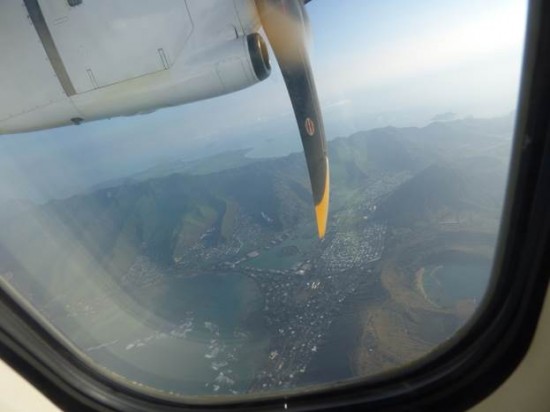
The air plane view.
The start of the race is located on a resort overlooking a beach on the west coast of Molokai. It is a beautiful place to hang out, talk to other competitors, get the boat ready and survey the course to Oahu, which looked flat as a frozen lake. While you cannot see Oahu itself, you can use the cloud formations over the island to gauge in which direction to paddle. Of course, in addition I had two GPSs: One to tell me how far I had to go and how many miles I had covered in what time, the other to tell me how far north or south I was in relation to a straight line between the islands. These are important tools to manage your hydration and your course. During most of trip across the channel it is literally impossible to know where you are. Your heading is dictated by the direction of the next runner you want to catch and changes every few seconds. So knowing how far you are from the direct line is not possible without a GPS showing your position in relation to that line.If taking two GPSs sounds to you like a plan so well thought out that nothing could possibly go wrong, well, then you and I have something in common. But as it turned out, I had to mount each GPS slightly off center on my foot strap. Within a few minutes of the start, each GPS has migrated to the far right and the far left respectively of the foot strap and I could see neither of them.
This year, the most dangerous part of the course was the first 10 feet:
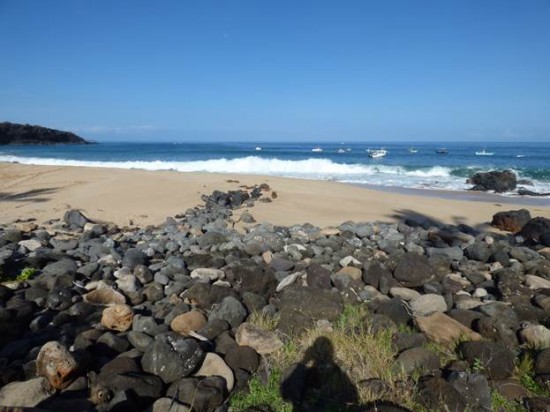
Beach Launch
The break was high and broke directly on the sand. With a bit of practice, observation of the incoming sets, and – of course – Joe Glickman’s generous expert advice on the topic of getting through the surf, getting out was a manageable feat. But the stakes were high: wrong timing would invariable destroy the ski and force you to abandon the race and ride back on an escort boat. Maybe an option that some of us considered as preferable to paddling hard for 4 hours in calm and hot conditions. Even swimming out to the Escort boat was difficult: my dad had agreed to coach me across the channel and was now standing ready to do battle with the 6 foot surf in his swimming trunks, flippers and a 20 pound dry sack. As a former passionate diver who had traveled the world’s best coral reefs, he had had experience with the situation, but not since I was born 41 years ago, which meant he was a bit rusty with the timing of the waves.
But ultimately everyone made it out and we lined up for the start. The battle for the first ten spots would be competitive, with 6 former race winners at the start and plenty of other top guns from South Africa, Australia, and New Zealand at the start, not to mention Greg Barton. Greg and I had been battling fiercely in the warm up races and each of our training paddles with inconclusive results.
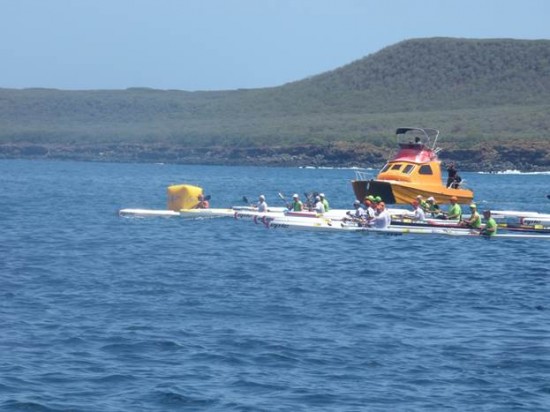
Start Line
The start procedure was simple and had worked very well for the more civilized waves of other crafts and the relays:
There was a five minute warning with a red flag, then there would be a green flag and a single blow with a horn shortly after to signal the start. However, the top surfski paddlers in the world are not a patient bunch, and by the time the starter reached for the green flag everyone was inching forward. But he had made a mistake by setting the horn on the boat: He would have to reach down to pick it up. As soon as he extended his arm to reach down to pick it up, everyone started their sprint. We were already a 100 yards out by the time we heard the signal.
The tempo was manageable and I felt I could hang on to the lead pack without too much trouble for the first 15 minutes. It was a bit faster than I would have liked to go for 33 miles, but I felt no need to drop back that early in the race.
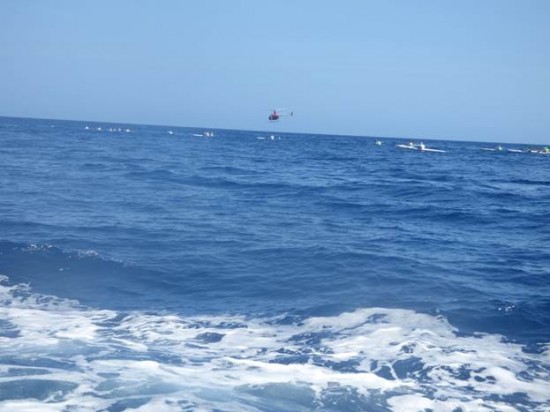
Helicopter
The escort boats were let loose about 20 minutes after the start and that was the first time we got noticeable waves to surf. The field split up immediately and Hank, Clint, Cory, Jeremy, Jasper, and Martin disappeared from sight as quickly as a starship fleet in hyperdrive. I used the resulting boat wakes to surf to the right a little bit. Being to the right of the straight line would come in handy later when the swell would be coming from the right, pushing me to the left.This stressed out my escort boat captain (and my dad who was also on the escort boat), and they kept yelling at me that I was off course. Even at this early stage of the race, I did not have much breath left to argue and continued on, leaving my escort boat feeling as if they were arguing with a bumblebee about the fastest route to a rhododendron in the neighbor’s garden.
This was also the time that Oscar started to overtake me and I shifted another gear up, even though I knew that as soon as the waves would pick up more, he’d leave me in the dust. My brain didn’t question the logic of trying to stay ahead of Oscar for another 30 seconds vs. preserving some strength for the next 4 hours. But it turned out that Oscar would have rudder trouble and had to essentially paddle the entire distance with using his rudder.
Even though there was not much wind, the channel was far from flat. I found the conditions very difficult actually: You had to make use of the waves, but the waves came from multiple directions and the ground swell travelled too fast to make use of it without sprinting hard. My race tactic was to ignore the competition and concentrate only on the next wave in front of me, because I knew from experience that trying to consciously make up time against a nearby competitor would detract my concentration from the waves and only slow me down.

Lessons
I had had a few invaluable lessons from Oscar and Greg about preserving strength in the waves and that’s what I tried to concentrate on for the next 30 miles: Stop paddling immediately when on a wave, avoid trying to get on a wave that’s hard to catch, and paddle easy or not at all when there is a wave in your way. It’s easier said than done, and I had to repeat my mantra for this race thousands of times in my head: “Go fast, no effort.” As soon as I stopped telling myself this, I started to go slightly slower, with plenty of effort. That was especially noticeable when, with only about 8 miles to go, I caught up with Heromana, a strong 21 year old paddler from Tahiti who now trains in Hawaii. When I consciously tried to overtake him, he would always make up ground, no matter how hard I paddled. Only when I focused completely on the waves and paddled easy was I able to make up ground.
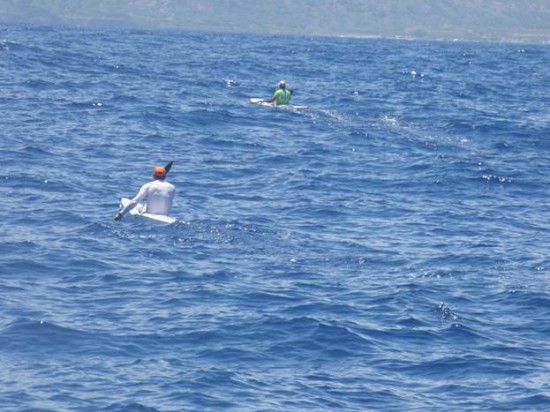
In Pursuit
It is surprising how difficult it is to find the right route to Oahu, even though you can see the destination (or at least the clouds above it) right from the start. The issues is that you are really never going straight where you need to go, but always either pointing left of the destination (when you are surfing down the south swell) or pointing right of the destination (when steering back up to compensate for the south swells). Of course, ultimately you will get to the right destination, but the nagging question during the four hours of paddling without a reference point is always how far you are from the straight line: Am I too far north or too far south? You always want to be within a quarter mile of the straight line. Going too far south means having to battle the south swell on the approach to Hawaii Kai, going too far north means going a longer distance than necessary. But with the straight line programmed into my GPS (that I had to twist manually in my direction each time I wanted to look at it), I was pretty sure I was somewhat close to the optimal line, even though my escort boat kept telling me frequently, with growing panic, that I was too far north. Then with about 4 miles to go, I saw Nick Murray just ahead of me. That added to the disorientation. Nick is a super talented paddler and did spectacularly well on his first outing to Hawaii from his freezing mid-western lakes, but I would not have expected him to be ahead of me. Had my escort boat been right all this time and did I end up going far out of my way? But then, wouldn’t more time have passed? It had only been about 3.5 hours. With sufficient exhaustion, it becomes difficult to reconcile conflicting facts, so I decided to concentrate on the wave ahead of me and grind on.
My hydration and nutrition strategy was simple: I had two Camelbaks of two liters each with me, both just ahead of the footrest, with both pipes clipped to my shirt. One was filled with a heavy Cytomax mixture, the other was just plain water. I just drank from whichever pipe I felt like at the time. This is a simple and foolproof strategy that always works well for me for long races in conditions where I am not exactly sure how the heat is going to affect me. I ran out of drink with about 2 miles to go which was perfect.
I had practiced the approach through reefs to Hawaii Kai around the tip of Koko Head many times and knew precisely the fastest route: A small opening in the reef just 30 or 40 feet wide, on the far right side of the bay. But the large south swell had closed this opening completely and forced me to go much farther out towards the shipping channel, to avoid the enormous breaking waves. It is tempting to try to get on one of the bigger ones and get a ride for a full minute or more, but I decided to play it relatively safe, since I did not see any competitors immediately ahead of me or immediately behind.
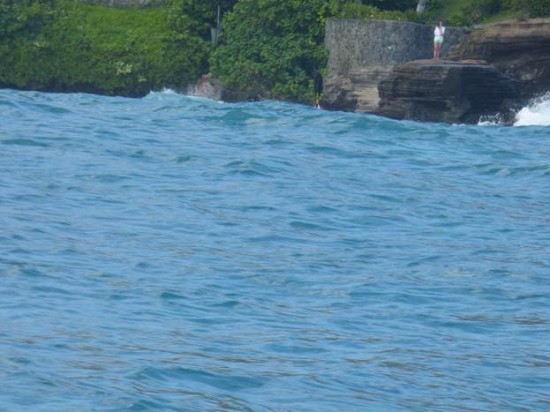
Look for my paddle
Lewis Laughlin was several minutes ahead of me and completely out of reach. But Tim Altman from Australia and Hiromana – both accomplished paddlers in heavy surf conditions – used a much riskier line to make up time on me and among themselves. They battled each other to a super tight finish, but even their risky line was not enough to make up the two or three minute advantage I had by then.
The Molokai Challenge is a long and challenging race, logistically difficult, and expensive. But the best part is spending the week before in Hawaii, preparing for the race. Even if the conditions on race day are untroublesome, there are always a few days with spectacular conditions and I can say for myself that I have learned more about paddling in rough water and making use of the ocean, than in the years before of paddling in easier conditions.
And of course, the race led to two of the proudest moments in my life:
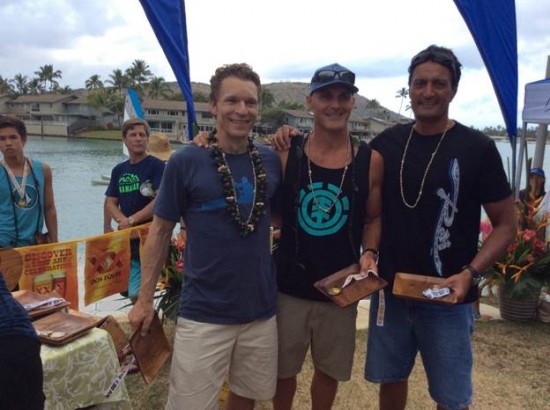
At the Awards
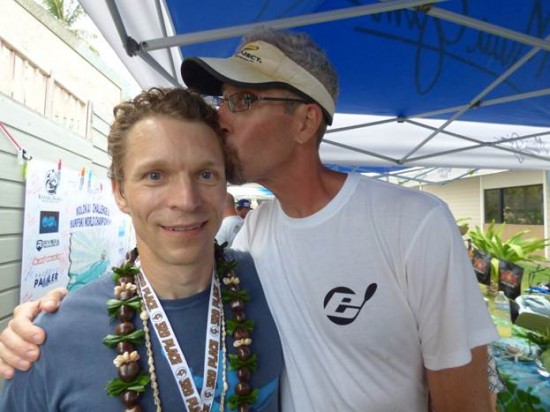
Results
http://www.pseresults.com/events/664/results
Video Taken by my Dad
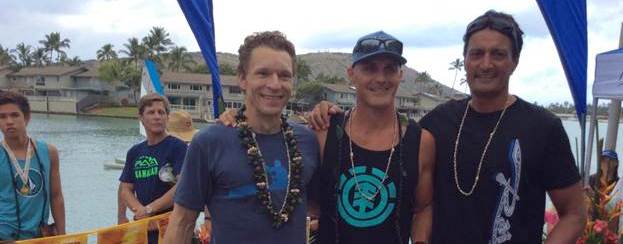
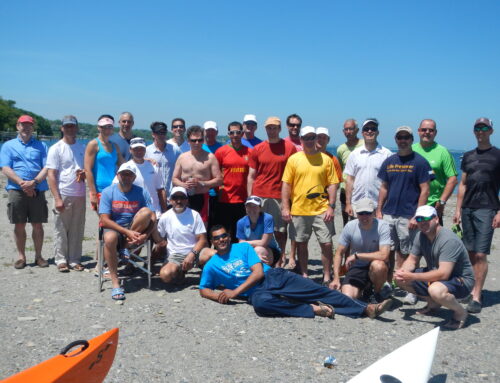
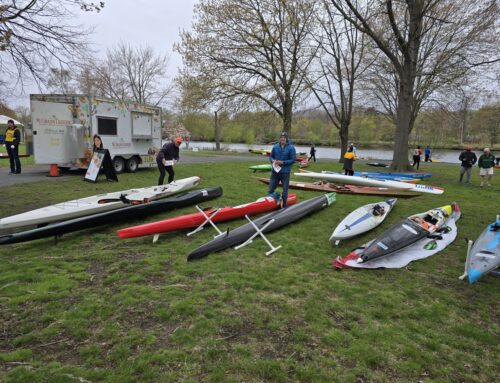
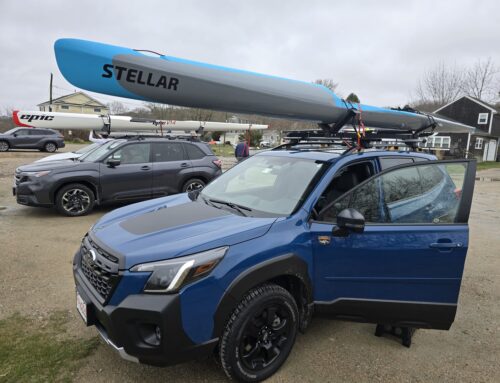
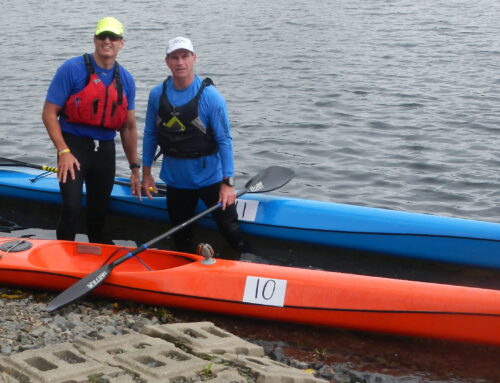
Leave A Comment
You must be logged in to post a comment.